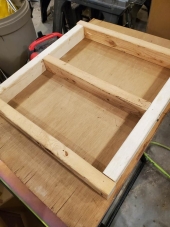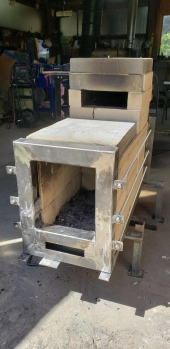





thomas rubino wrote:
I was warned, possibly by Fox, who has vast experience vibrating cast items, to be careful "Not" to over-vibrate!

thomas rubino wrote:
I used a variable-speed saws- all with no blade. My forms were sitting on plywood with a tire bolted to it.


thomas rubino wrote:Hi Matt;
Gerry did all the welding on the airframe itself.
I built the door while he worked on that.
11-gauge steel plate, 3/8" square stock , 1/2" gasket stuffed tight, 1/2" rod as the handle.
The window glass is 8x8", and the opening is 7x7", I cut it with a skinny wheel on a side grinder, and a jig saw.



thomas rubino wrote:
I am very happy to report the highest temps my arch has risen to are just over 400F!!! (Success!)

Peter van den Berg wrote:
Matt Todd wrote:@Peter van den Berg
Do you think it would be alright to put the final exhaust opening on the BACK side of the riser instead of the front?
Yes, Glenn is right, it can be done. The lower riser part should be different, the pictures of the French bench build are quite clear how it should be done, in my opinion.
